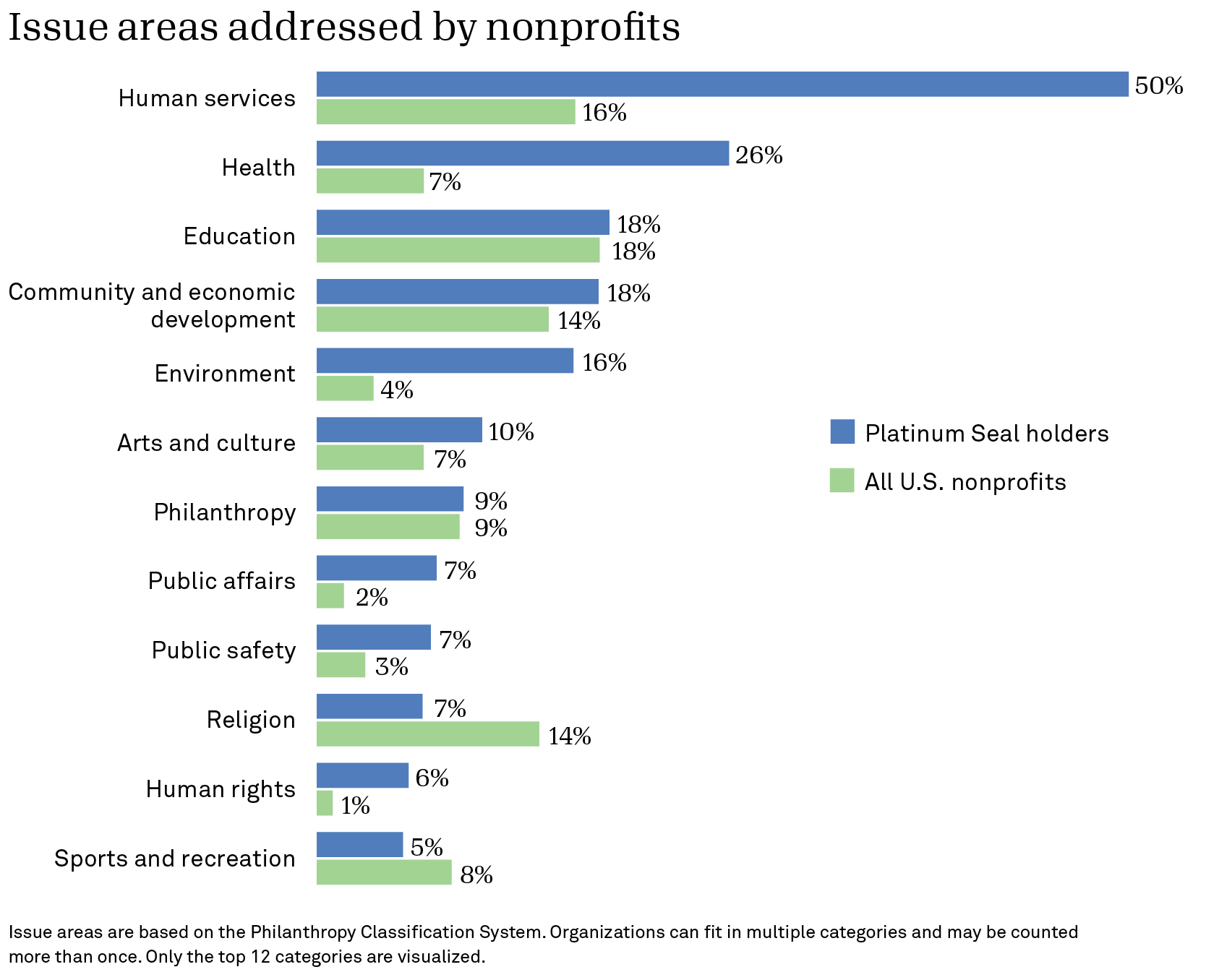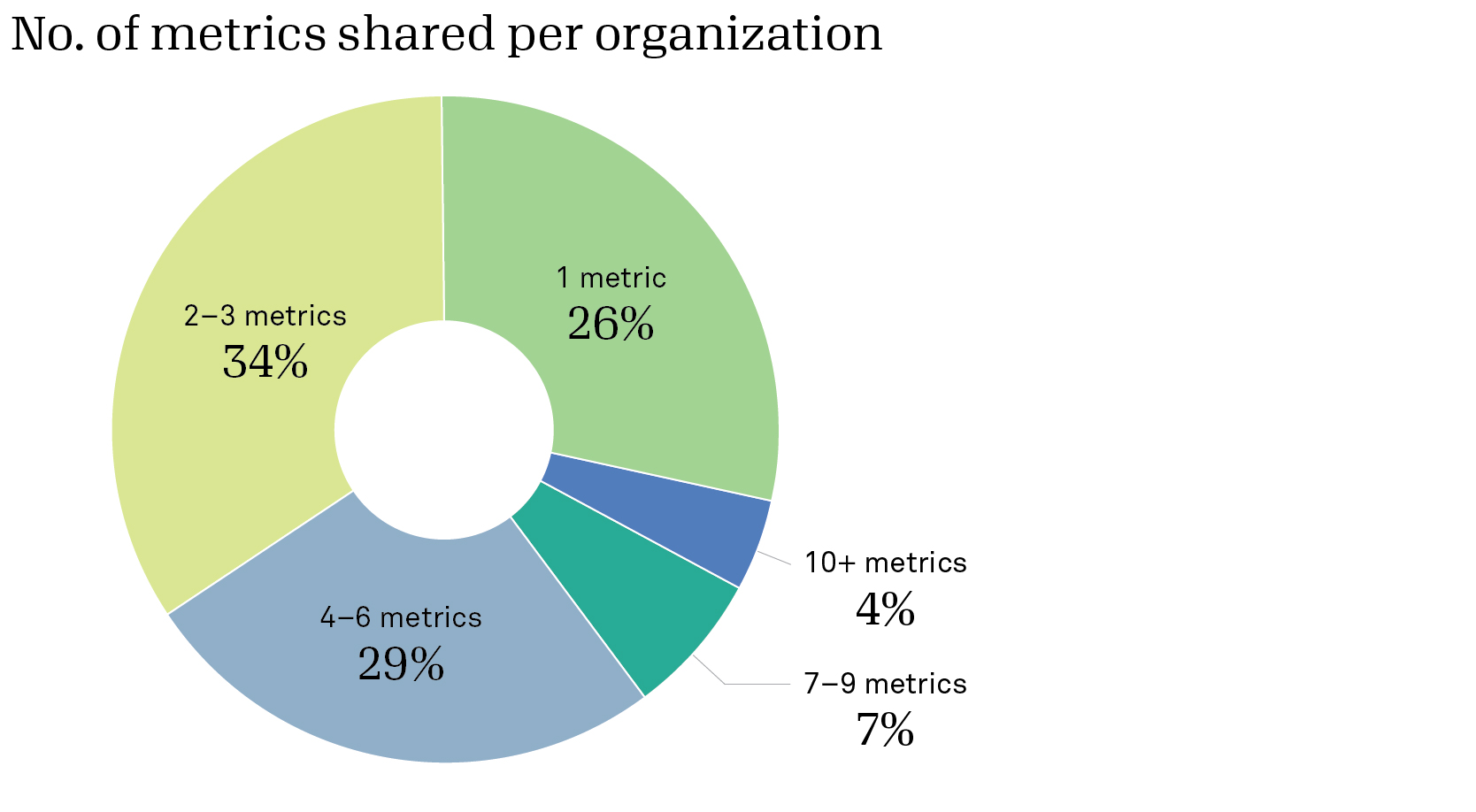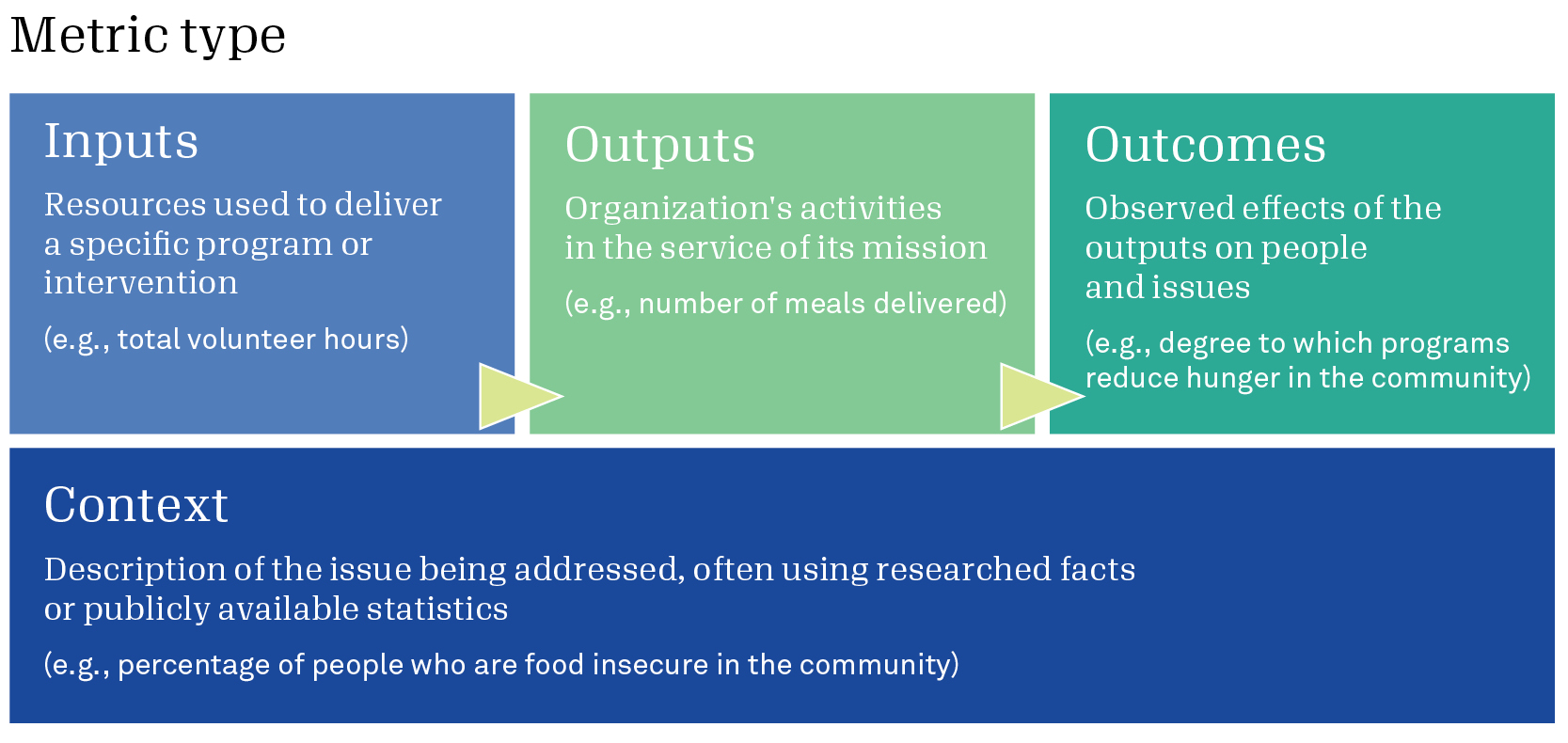Toward transparent metrics

What we can learn about nonprofit results from Platinum Seal holders? How do nonprofits measure success? How do they know they’re making a difference? Questions about the nonprofit sector’s impact and effectiveness abound—and are inordinately hard to answer. But one source for answering these questions resides in transparent metrics and data provided by GuideStar Platinum Seal holders.
More than 12,000 nonprofits are committed to Candid’s highest level of transparency and have earned a GuideStar Platinum Seal. In addition to communicating their mission and strategies and disclosing financial information, these nonprofits share quantitative data about their progress and results (such as how many program participants gained employment or reported improved health indicators). Organizations have shared more than 43,000 metrics, which demonstrate how nonprofits measure the difference they make in the world.
Who shares their metrics?
Platinum Seal holders address a diverse range of issue areas. Half are engaged in human services, compared to 16 percent of the general nonprofit population. Platinum Seal holders are also far more likely than nonprofits overall to work in the areas of health and the environment. Religious organizations are less likely to be Platinum Seal holders, although they make up the fourth largest category among all nonprofits.

What kinds of metrics are shared?
Platinum Seal holders provide, on average, three metrics. About a quarter of organizations share just one metric, the minimum requirement. Organizations typically report four years of data per metric.

Most metrics are outputs (64 percent); 18 percent are outcomes. Nonprofits can categorize their metrics as inputs, outputs, outcomes, context, or other (for those that fall outside these categories). Each is an important part of an organization’s story.

The majority of metrics are outputs, describing an organization’s activities and programs. Context metrics are rarer, making up only 4 percent of all metrics.

The most frequently used metrics are:
- Number of volunteers
- Number of clients served
- Total number of volunteer hours contributed to the organization
- Total dollar amount of grants awarded
- Number of participants engaged in programs
- Number of Facebook followers
- Number of students enrolled
- Number of meals served or provided
- Number of animal adoptions
- Number of animals rescued
Metrics are trending in the right direction. When Platinum Seal holders share a metric, they indicate how they would like to see each metric change over time: does success mean that a metric increases, decreases, or stays the same? Often, organizations want to see metrics increase, whether it’s to see more students graduate, or more animals adopted. The vast majority of metrics fall in this category. But success can also mean that a metric decreases—when fewer children go to bed hungry or student absenteeism drops. Comparing organizational data from 2019 and 2020, 52 percent of metrics that were intended to increase did, in fact, increase. And 66 percent of metrics that were intended to decrease actually decreased.
Conclusion
The nonprofit sector is complex, varied, and difficult to evaluate. We believe there is no single standard with which to understand effectiveness, but increased transparency will benefit the entire sector. The Platinum Seal allows nonprofits to share the data that matters the most to them. You can join the more than 12,000 nonprofits that have earned a Platinum Seal and demonstrated a commitment to sharing their results. It’s not too late to get started. Join a free webinar on September 15 to find out how to earn a 2021 Seal of Transparency. And learn more about what we know about Seal holders, overall, here.
Analysis of Seal holder data was conducted by Carol Brouwer.





